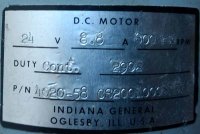gentlegreen
I hummus, therefore I am ...
So ... I have loads of spare bike parts and realistically I could do with an exercise machine - if only as a health evaluator as I move into my 60s ...
I am also faced with having to haul a load of materials upstairs, so could do with an electric winch - though I will be mounting a block and tackle ...
For over 30 years I've been sitting on a couple of large DC motors that came from a computer tape drive - and somehow managed not to lose one of the tape reel hubs.
It will be interesting to see what I can usefully do with maybe 100 watts when used as a dynamo ... my first thought was some sort of rave machine to wheel onto the path to amuse the neighbours on Thursday nights ...
I thought I'd fallen at the first hurdle because the teeny American grub screws weren't metric - but it'll do for now...


Luckily the only sprocket size I have with sufficiently close mounting holes is just big enough for the chain to clear the sides.
But before I start drilling holes in it, I need to accurately centralise it ....
I am also faced with having to haul a load of materials upstairs, so could do with an electric winch - though I will be mounting a block and tackle ...
For over 30 years I've been sitting on a couple of large DC motors that came from a computer tape drive - and somehow managed not to lose one of the tape reel hubs.
It will be interesting to see what I can usefully do with maybe 100 watts when used as a dynamo ... my first thought was some sort of rave machine to wheel onto the path to amuse the neighbours on Thursday nights ...
I thought I'd fallen at the first hurdle because the teeny American grub screws weren't metric - but it'll do for now...


Luckily the only sprocket size I have with sufficiently close mounting holes is just big enough for the chain to clear the sides.
But before I start drilling holes in it, I need to accurately centralise it ....
Attachments
Last edited:













